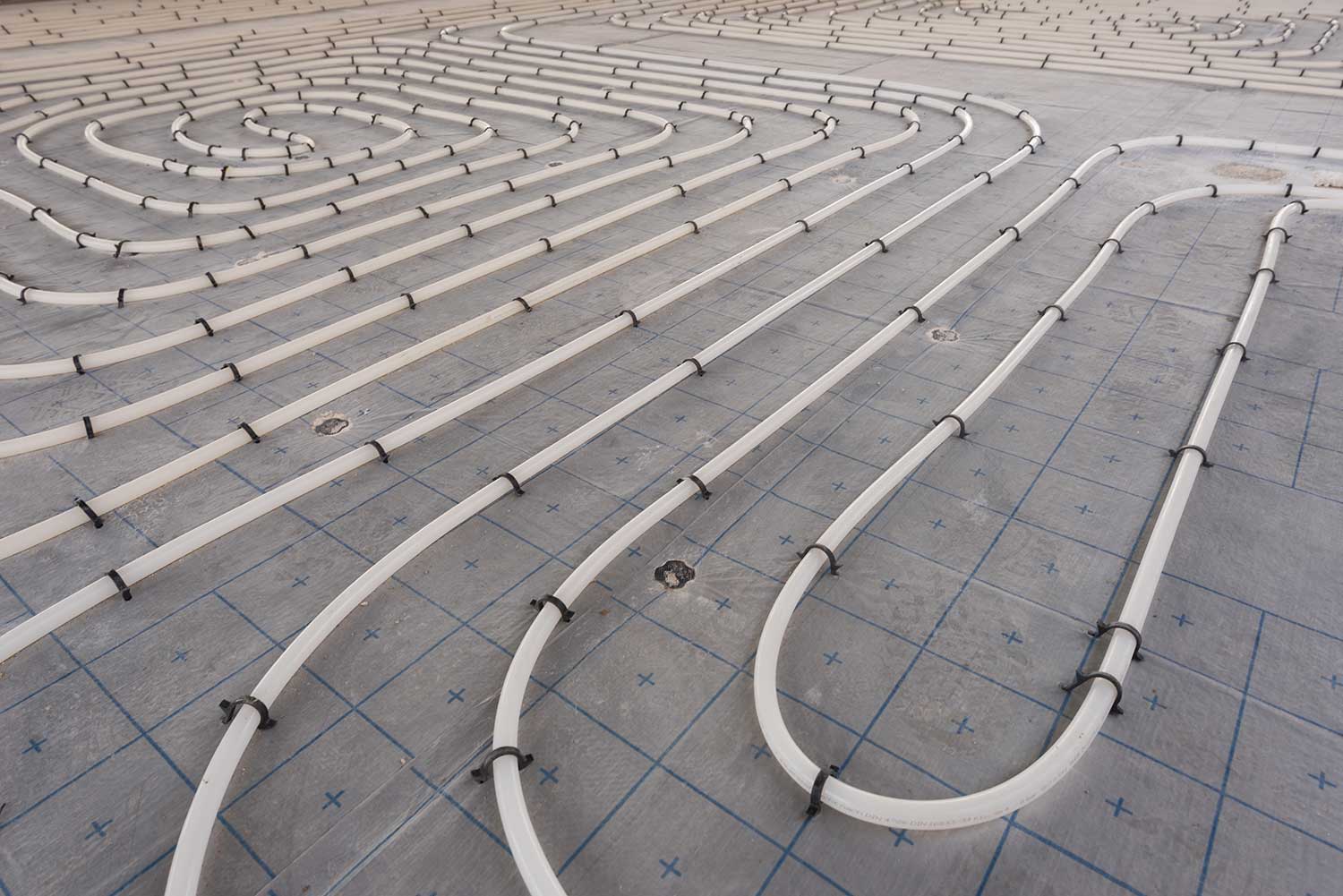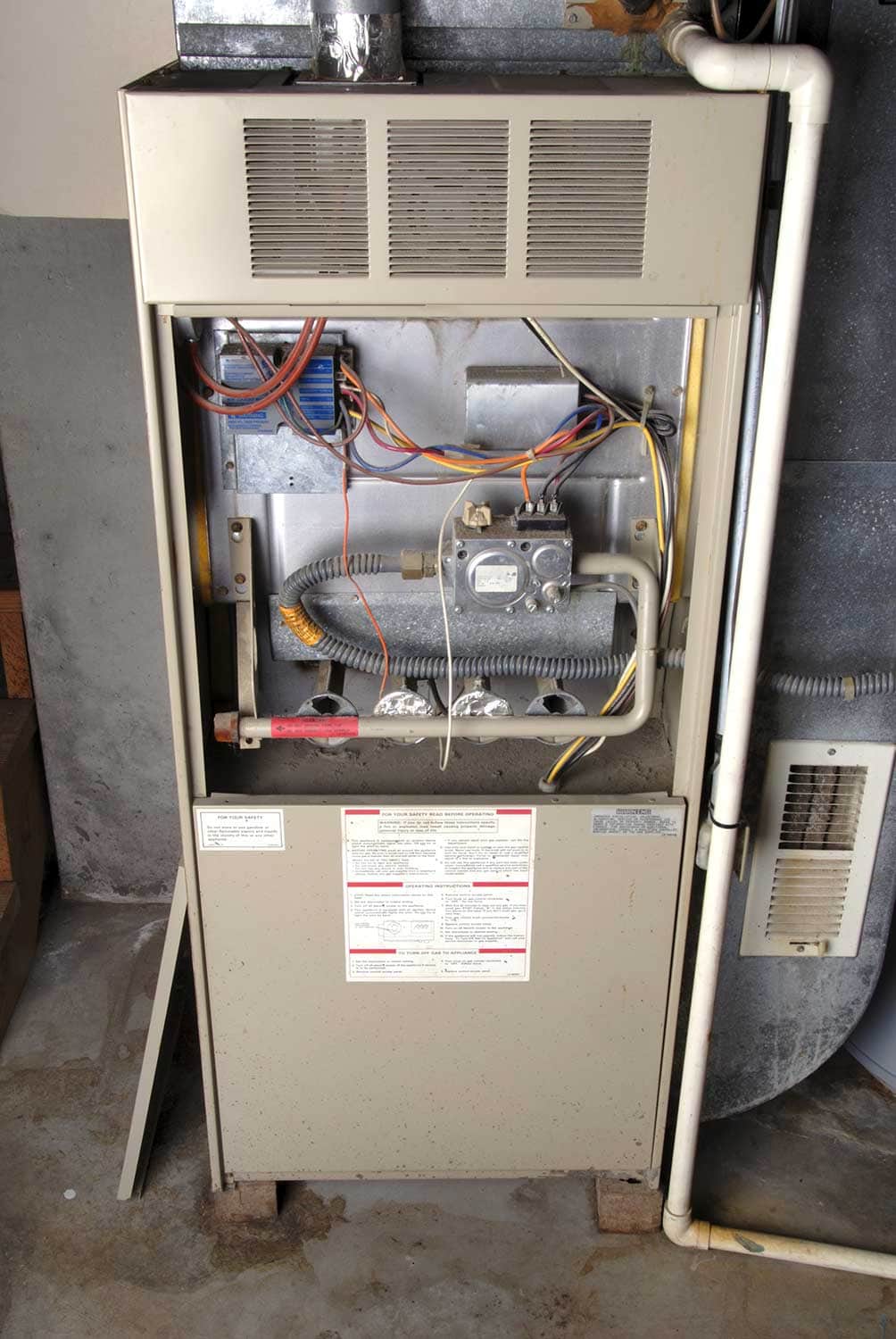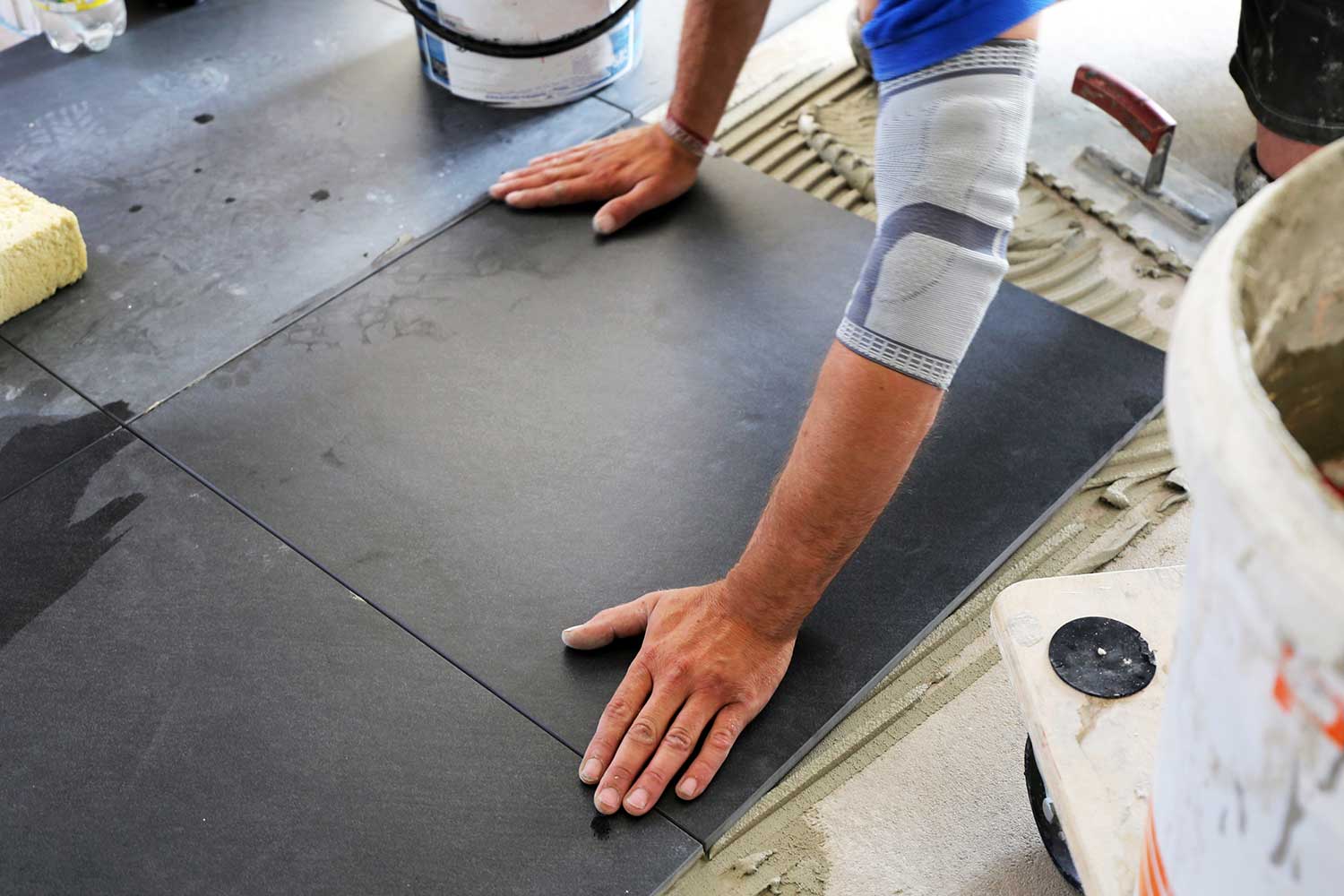Radiant floor heating is best known for how it can keep floors at a comfortable temperature, but is it just for floors?
Or is radiant heat enough to warm the air, maybe even heat the whole house? We've researched how radiant heat warms the air to get these answers for you, so you can decide if radiant heat flooring is right for your home.
Radiant heat transfers warmth through the floors to increase a room's air temperature to your desired temperature. Electric wires or tubes full of hot water are installed underneath the floor, which warms the floor first. Then, the heat radiates evenly up through the room to provide a consistent and comfortable air temperature.
Read further to learn more about radiant heat. We'll discuss how it works, look at how it compares to forced-air systems, if it can only be installed below floors, and if it can be used as a whole-house heating system.

How Radiant Heat Works
When radiant heat is installed, the tubes that carry the heat are placed either within a concrete slab or subfloor (called a wet install) or directly under the subfloor (dry install).
A wet install using concrete is the most efficient for heating, as concrete retains heat well due to its density.
As the subfloor heats up, it begins to radiate that heat up into the room. Waves of radiation rise to heat the objects and the people in the room.
Technically, the air itself is not being heated, but it is being warmed by heat transfer. This is a big factor in why radiant heat is considered so energy efficient. Rather than waste energy heating the air for the indirect comfort of those in the room, the people in the room are being heated directly.
You might also like: How Long Does Radiant Floor Heating Last?

Is Radiant Heat Gas Or Electric?
Radiant heat, in itself, is powered by electricity or water.
In electric systems, heat is transferred through the floor into a room through a series of electric wires installed under the floor. It may operate at 120 or 240 volts. This is the easiest option for DIY projects.
Hydronic, or water, systems work by pushing hot water through a system of piping. A boiler heats the water, and the boiler may be gas or electric.
Either one works equally well, and you can use whatever you currently have in your home. If you do not have a boiler and have to install one, it's worth noting that gas is cheaper to operate.
Which Is Better; Forced Hot Air or Radiant Heat?
Radiant heat systems win over forced hot air systems in almost every imaginable way once installed. And yet, most homes use forced hot air for a practical reason - the cost, time, and difficulty of radiant heat installation. To compare the differences:
Radiant Heat Pros
- Radiant heat systems are much more energy-efficient. In a forced-air system, leaky ducts lose 20-30% of the warm air meant to heat your house, which leads to higher energy bills. Radiant heat provides, on average, a reduction of 15% to energy bills.
- Radiant heat systems heat through the entire floor surface, which means air rises evenly through the room for warm, consistent temperatures. No hot and cold spots depending on air movement and radiator or vent placement, like with forced-air systems.
- Allergies tend to be minimized by radiant systems. In a forced-air system, the blowing of hot air through the ducts also blows dust and other allergens around. This doesn't occur in radiant systems, which tends to diminish the symptoms and suffering of those with allergies.
- Relatively little maintenance is needed for radiant heat. Systems can last as long as 35 years and often come with a 25-year warranty. It's rare in radiant systems to need a service call; forced-air systems tend to need furnace replacement in half that time.
- Radiant heat offers quiet operation, without the loud furnace kicking off and on all the time, like in a forced-air system.

Forced Air Pros
- Forced-air systems are cheaper at the time of installation. While radiant heat systems last longer, cost less in maintenance, and save money on your monthly bills, they can easily cost twice as much to install as a forced-air system. The cost of radiant systems tends to run between $10-$20 per square foot.
- Installation is much simpler for forced-air. An easily accessible furnace can be hidden away in the basement. In contrast, radiant systems may require the floors to be pulled up for installation (and again if any repairs are needed).
- Forced-air is relatively compatible with home cooling - the same ducts can provide both needs. In radiant floor heating, it's not so easy to provide cooling power through the same system. If you require whole-house air conditioning, you'll still need ducts installed to provide it.
You might like: Are Heated Floors Dangerous?
Can You Heat A Whole House With Radiant Heat Flooring?
You can absolutely heat a whole house with radiant heat flooring. The actual success of heating will depend on several factors, such as how air-tight and well insulated the house is.
Houses that are mostly carpeting may not experience the full benefit of radiant heat flooring, as carpet can have an insulating effect and prevent heat from entering the room.
New homes in construction, or homes already in major remodeling projects, are the easiest for adding a whole-house system, as existing homes are often too difficult for a whole home retrofit.
The floor would need to be removed and replaced, which deters many homeowners unless they were already planning to extensively re-work their homes.
If you are looking for a whole-house system, the hydronic system is more efficient and cost-effective.
Electric systems are typically a bit more expensive to run (but easier to install) and best when the heat is only wanted for a specific area (such as a bathroom).
Be sure to read: How Long Do Heated Floors Take to Heat Up? [By type of floor]
Alternatives to Floor Installation
For people interested in radiant floor heating, but it's too late to do anything rather than a difficult retrofit into their existing home, is there any way to enjoy radiant heat without pulling up the floors? There is one less-known alternative, a radiant heat ceiling.
In a radiant heat ceiling, the same basic method is employed in the ceiling. Tubes are installed, either electric or hydronic, and heat then radiates down from the ceiling.
Often, the first question raised by this system is efficiency - how can the room be warmed from above if heat will rise? Technically, it is hot air that rises, not heat.
Since the air itself is not being heated directly (the warming is a secondary effect as heat transfers to people/objects in the room), this is still an efficient way to heat without much energy loss. It is similar to how the sun, or a heat lamp, can radiate waves of heat to objects on the ground.
Advantages to this method include:
- Cheaper installation (about half the cost of radiant flooring).
- Easier to retrofit with less disruption to the home.
- Output to a room is not limited or affected by floor coverings.
- Can heat to a higher temperature without the risk of damage or discomfort like in flooring systems (walking on a too-hot floor can be uncomfortable, even if the temperature is safe.) No one has to worry about touching the ceiling.
- Faster warm-up times, compared to floor systems that can take an hour or two to fully rise to the desired temperature.
What Floor Covering Is Best for Radiant Heat Flooring?
Ceramic tile conducts and stores heat well and covers floors when radiant heat flooring is used. Vinyl or linoleum can also be used, but thinner vinyl with dense padding will have the best results.

If carpeting is used, like vinyl, try to avoid thick carpets and select dense padding. If possible, avoid carpet whenever possible since it can prevent heat from entering the room.
Wood can become dry from the heat, so it is best to use selected laminated wood flooring if wood floors are preferred.
What Temperature Should Radiant Heat Be Set?
There are two kinds of temperature readings possible with a radiant heat system. Thermostats can provide an air temperature reading or a floor temperature reading.
As a general rule, floor temperature readings tend to be around 5 degrees warmer than the air temperature. If you are comfortable at 70 degrees, for example, set the floor temperature to 75 degrees.
Overheating the floors can cause damage, so avoid exceeding floor temperatures of 85 degrees. Finished wood floors are particularly susceptible to damage from heat.
In Conclusion
Radiant heating heats the air by heating electric wires or hot water under the floor (or, less commonly, in the ceiling). Heat is transferred from the floor to objects and people in the room, and finally to the air.
This provides a consistent and even temperature. Radiant heating can be used in one room or for a whole house as an energy-efficient and comfortable heat source.

Thank you so much for your suggestion of what kind of flooring material to use with radiant heat flooring. I’ve always wanted to have a more comfortable way to heat up our house that doesn’t involve air since that could make it a lot dustier for us at home, and that’s something we don’t want. To make sure it’s effective, I’ll look for an HVAC contractor to install some radiant flooring for us while using ceramic tiles.
Hi, if you live where temperatures go below freezing throughout the year, you will require propylene glycol in the lines with a 51% antifreeze capability. Water is mixed with the glycol. Propylene glycol is provided by your plumber.
Testing is vital as to the strength of the glycol mixture. Without the glycol in the lines, they freeze and the system cools down. Like when one is away and come back to an icy house and broken water lines.
Currently, I am building my new house, and I don’t know what type of flooring should I use to make my house’ floor warm and also tell me what type of furnace should I use.